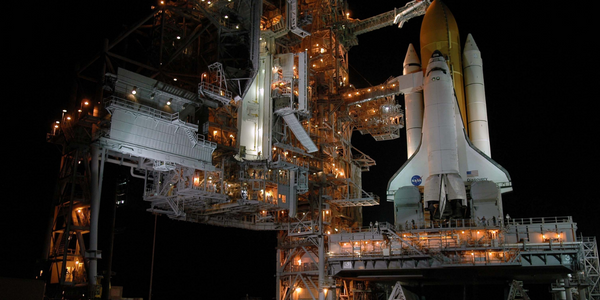Integrating Systems Modeling with Simulation Helps Ensure Robust Space Debris Re

- Analytics & Modeling - Digital Twin / Simulation
- Aerospace
- Digital Twin
- System Integration
On the e.Deorbit proposal, Airbus DS engineers addressed these concerns by using system modeling to simultaneously develop the mission requirements and architectures. They developed a SySML model that integrates the safety and architecture requirements, system capabilities, functional architecture, and concept of operations (CONOPS).
Developing the architectures and requirements in parallel helped to validate the requirements at an earlier stage in the project, saving considerable time and money. While this approach was a major step forward, Airbus DS engineers recognized that its benefits were limited by the fact that the domain simulations required to support the development of the architectures were each run manually and separately by engineers responsible for a particular domain.
The results from these simulations were later uploaded to a database and used as input parameters for the system model and other simulations.
The performance of the entire system for a particular use case is not clear until each of the simulations involved is completed which takes days or weeks. Considerable time and effort are required to simulate the performance of the entire system for even a single case, limiting the number of cases that can be run in the architecture definition phase.
This creates the potential for errors and unexpected interactions that cost considerable time and money to correct when they are discovered later during the detailed design stage.
European Space Agency (ESA)
European Space Agency (ESA) is studying an active debris removal mission called e.Deorbit which is intended to capture an ESA-owned derelict satellite in low orbit and safely crash it into the ocean in a controlled atmospheric reentry.
The Airbus Defence & Space proposal for this project used Model Based System Engineering (MBSE) to simultaneously define the mission requirements and the architectures. In a parallel internal study, Airbus DS engineers used ModelCenter Integrate and MBSEPak to integrate the simulation tools used to evaluate the performance of the architecture with the system model.
This integration demonstrated that it is possible to greatly reduce the time required to verify the requirements and architecture by making it possible to run major simulation tools as part of an automated workflow that was driven by the systems model. This streamlined process increases the number of cases against which the entire system could be simulated by several orders of magnitude. It also makes it possible to cycle through the simulation one-time step at a time while simultaneously viewing simulation results for the entire mission.
Airbus DS used Phoenix Integration’s ModelCenter Integrate and MBSEPak to integrate the SysML representation of the e.Deorbit mission with the simulation tools that are used to predict the performance of architectural alternatives.
Phoenix provided custom training and on-sight consulting to enable Airbus DS engineers to integrate the system model with the Matlab dynamic model used to determine the trajectories of the derelict and mission satellites, the physical decomposition model, and other domains models used for avionics, structural and thermal simulation.
ModelCenter also manages the data flow between the simulation tools so the entire mission or any subsystem can now be simulated simultaneously in a single integrated process driven by a common dataset from the system model.
Airbus DS engineers have the choice of cycling through the mission at time intervals of their choice and viewing the results after each step or simulating the entire mission in a batch process and viewing the results after the fact.
Related Case Studies.











